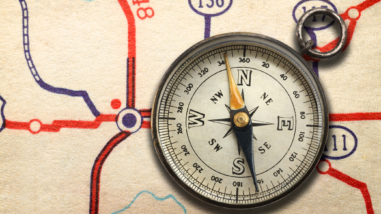This post was originally published at Transparency Talk, the Glasspockets blog. -ed.
There’s a great quote about “big data” from Dan Ariely of Duke University that’s been circulating for the last couple years and is still spot on: Big data is like teenage sex: everyone talks about it, nobody really knows how to do it, everyone thinks everyone else is doing it, so everyone claims they are doing it.
This seems particularly true of the philanthropic sector—we’ve all been talking about it, but we’ve yet to find the right way to apply the rhetoric of big data to our work. In part, this is because we don’t actually have many examples that follow the original definition of BIG data. The oft-cited example of Target using big data to determine when a customer is pregnant in order to focus their marketing is an interesting story, but it’s challenging to figure out what the corollary would be in philanthropy. In reality, most of our data is pretty small or—at most—medium in nature. And even with that, we’re still learning to effectively define, collect, use, and share data within our organizations and across the sector.
With all this in mind, it was incredibly refreshing to attend a session at the recent TAG (Technology Affinity Group) conference in Miami that was an honest dialogue about big data and philanthropy. C. Davis Parchment, Manager of the Electronic Reporting Program at the Foundation Center and moderator of the session Managing Big Data Across Foundation Roles: Identifying New Tools for New Teams, set the stage with a much needed redefinition of big data. Rather than think of big data in its most literal definition as very high volume data sets, Davis described big data as a movement, one that focuses on analysis, rigor, metrics, and critical thinking. Big data as a movement calls on us to employ technology more effectively; to better collect, use, and share data to inform our work, make decisions, and ultimately, to create real and lasting impact through our grantmaking. If we do this well, it will change the way we work—transforming roles and processes within our organizations and redefining how we collaborate and share across the sector.
The first speaker, Kevin Rafter, gave us an example of this concept in action, focusing on creating new data about grantmaking. As Manager of Impact Assessment and Learning at the James Irvine Foundation, Rafter has designed a framework for collecting qualitative and quantitative data about grant results across Irvine’s diverse set of program areas. Irvine is implementing a new grant closing process through which staff will answer five straightforward questions about results before closing a grant. To make it easy, the user interface is elegantly built within their Foundation Connect grants management system. Collecting this information will create a new data set for analyzing their grantmaking impact and learning from grants. By collaborating together, an internal project team was also able to simplify and clarify the grant closure process overall. This is a great example of a foundation giving thoughtful attention to how they define and collect useful data. I’ll be eager to hear more from Rafter once staff has used the tool through several grant closure cycles and they’ve further developed their data set.
We know that an important function for grantmaking data is creating transparency when it is made publicly available by foundations. Suki O’Kane, Director of Administration at the Walter and Elise Haas Fund, brought this concern to the fore by sharing her organization’s experience as the 19th member to join the Reporting Commitment Initiative, which is managed by the Foundation Center as part of Glasspockets. Foundations who join the Reporting Commitment agree to make machine-readable grant information available to the public at least four times a year and to use a common geographic coding scheme for their grants thus making timely and accurate reporting on the flow of philanthropic dollars more broadly available. Upon joining the Reporting Commitment, the Haas Fund developed an open source tool that makes it easier for other foundations to participate in the initiative. The tool, called Open hGrant, is a WordPress plug-in and is a great example of how innovative technology design can ease the sharing and use of data. As O’Kane artfully described, the contribution also embodies the spirit of collaboration: it improves data sharing practices at the Haas Fund, then takes that learning even further by advancing data sharing within the whole sector. The Open hGrant tool brings us one step closer to eliminating the barriers to better use data in our grantmaking.
According to Patrick Collins, Chief Information Officer at The William and Flora Hewlett Foundation, another way to ensure better data use is through automation—which makes data activities more efficient and will ultimately transform how we do our work. Specifically, Collins talked about the use of Application Programming Interfaces (APIs) to connect and share data across systems. By connecting with external systems via APIs, Hewlett has been able to automate many repetitive tasks and free-up staff time to focus on more substantive challenges. One example Collins shared is how Hewlett now automates simple tax status checking via an API with Guidestar’s Charity Check system, eliminating the need for data entry and administrative staff time. As the use of system interfaces is adopted more widely, it will allow real-time data sharing and will deliver data to users in the right way—and at the right time—for decision-making. This, in turn, will change how people do their jobs, share information, and collaborate.
We certainly don’t have big data completely figured out in the philanthropic sector, but this session at TAG was a nice step in the right direction. I was deeply heartened by the spirit of collaboration, pragmatism, and creativity throughout the presentations and discussion afterwards. There’s big potential on the horizon for data to be used more effectively and—through that—to improve our grantmaking practice and how we all achieve impact. I’m excited by this ongoing conversation and the transformative power possible if we all collect, use and share data well.



